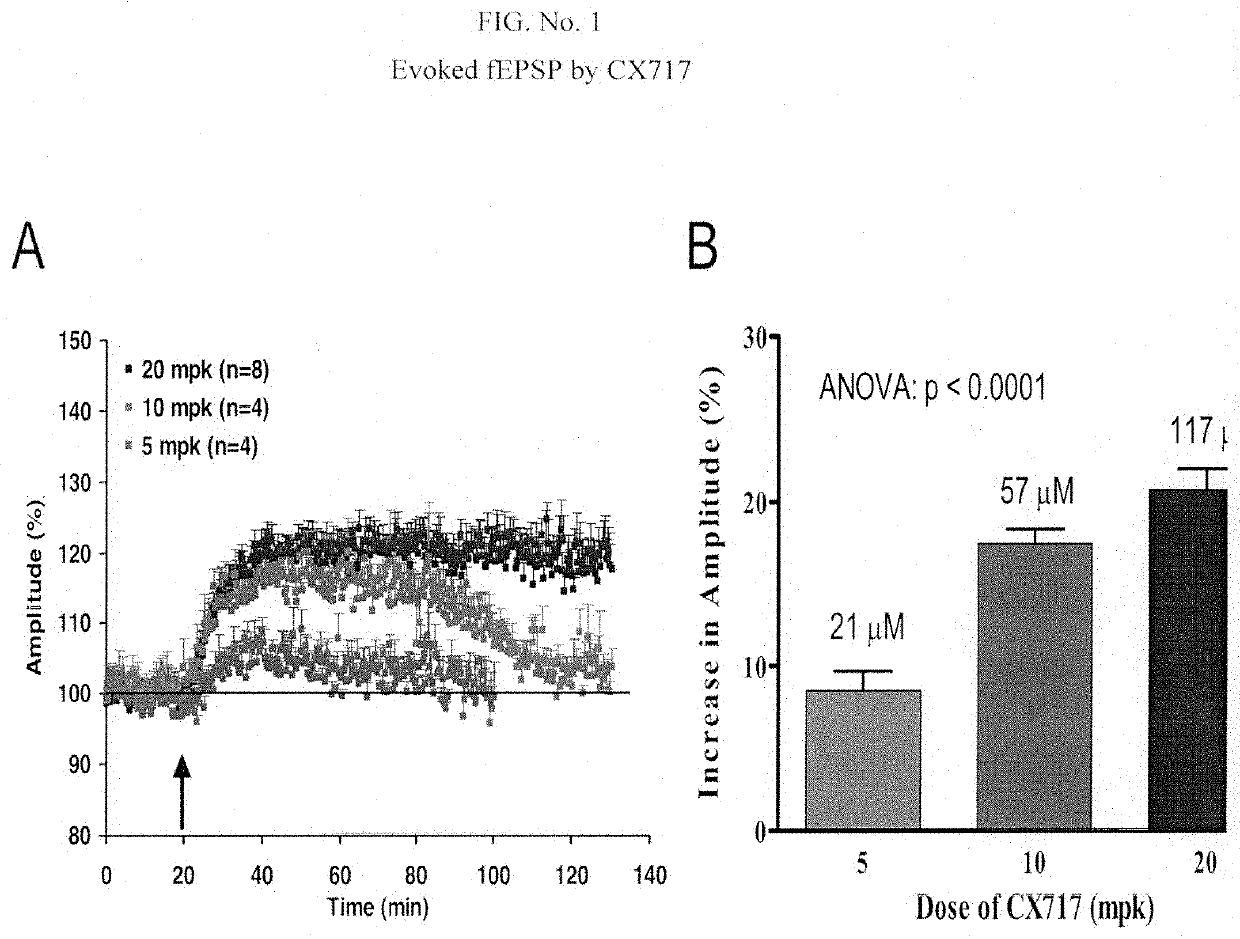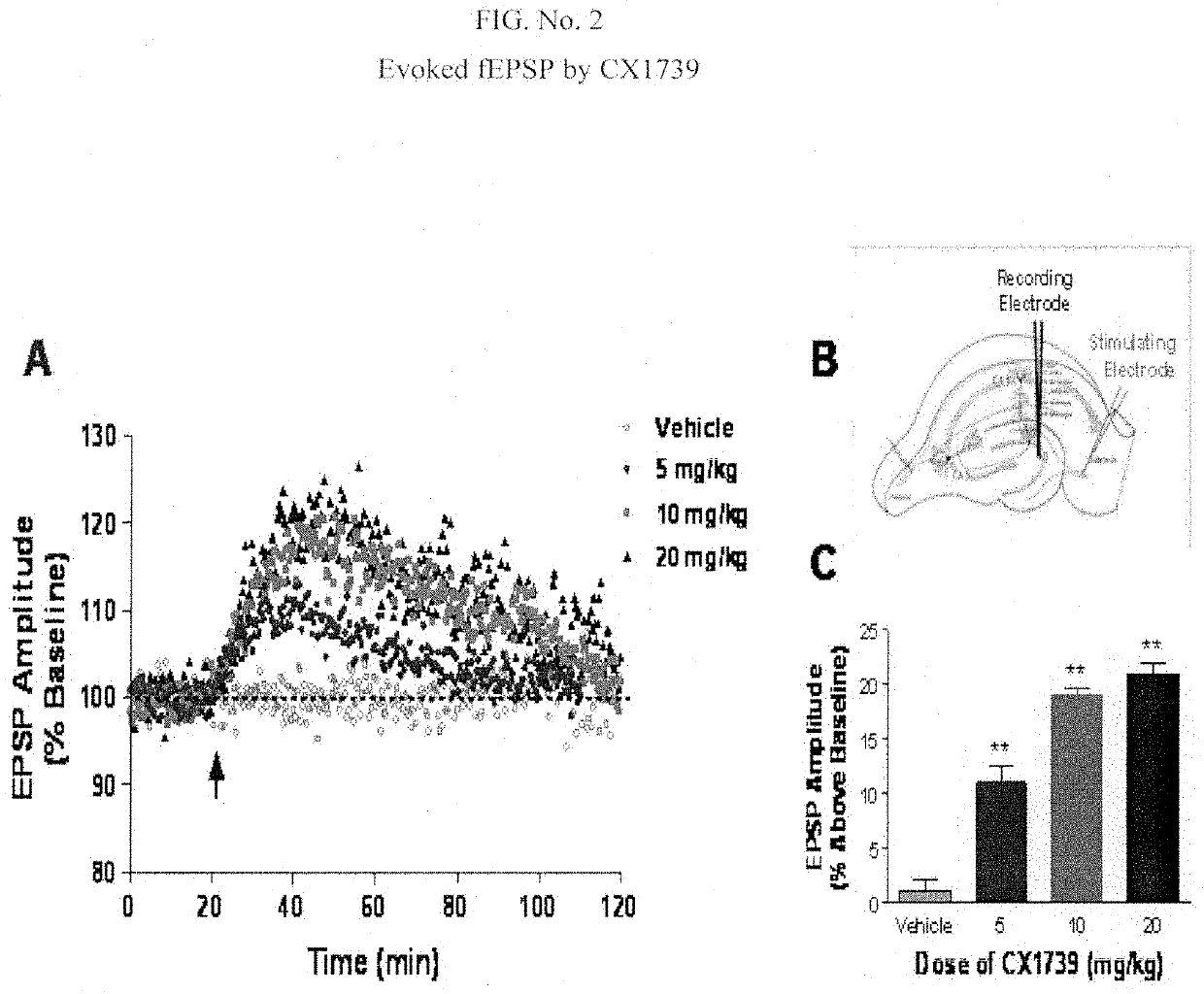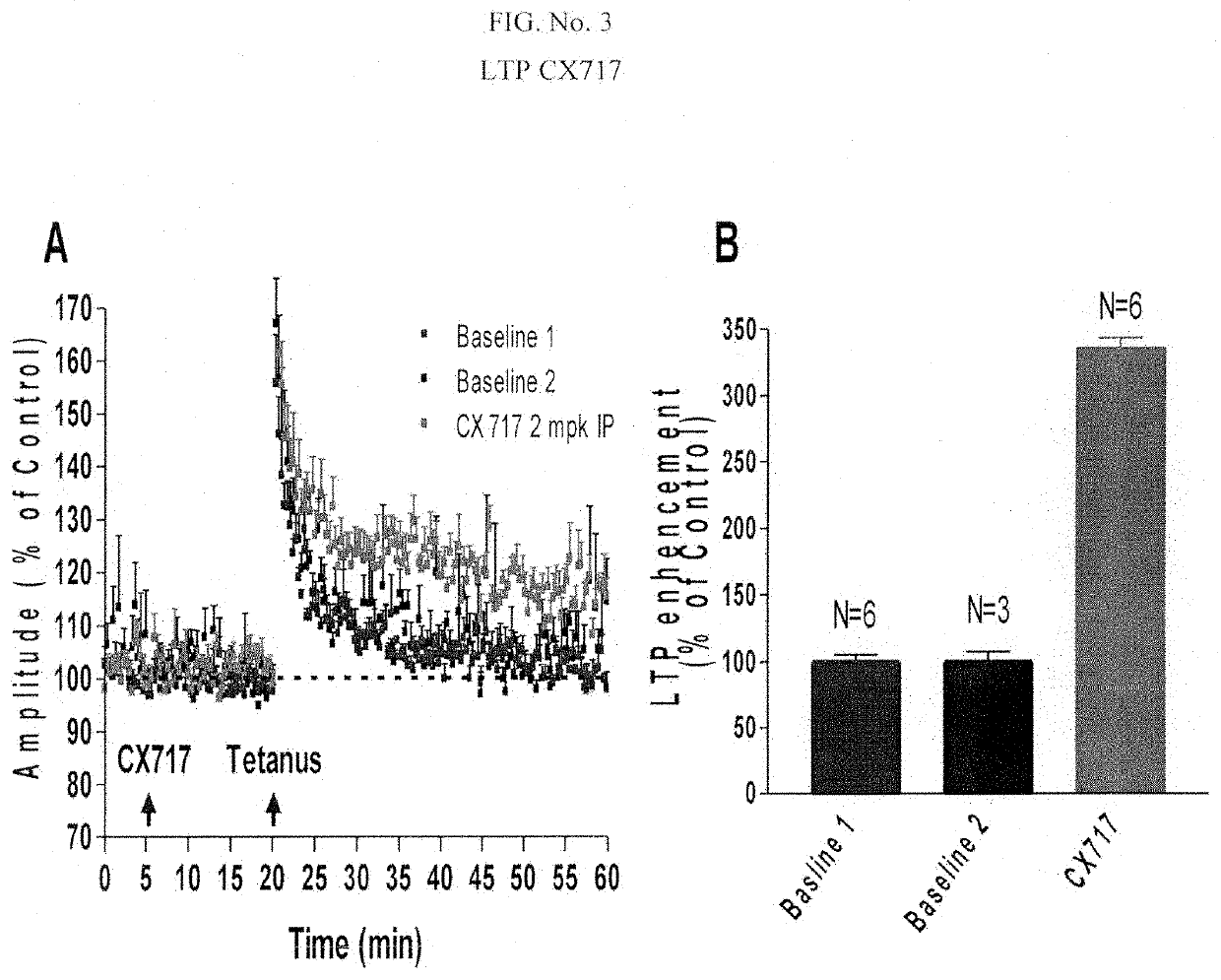Compositions and methods for treating attention deficit disorders
a technology for attention deficit disorders and compositions, applied in the field of drugs and methods for treating attention deficit disorders, can solve the problems of low educational attainment, reduced cognitive functioning, lack of concentration and impulsivity, etc., and achieves the effects of reducing or eliminating stimulant effects, eliciting potent anti-adhd activity and other clinical effects, and low impa
- Summary
- Abstract
- Description
- Claims
- Application Information
AI Technical Summary
Benefits of technology
Problems solved by technology
Method used
Image
Examples
example i
Identification and Characterization of Low Impact Ampakines for Selection and Use as Anti-ADHD Drugs
[0177]Within the following Examples two exemplary ampakines were identified and characterized for their novel utility and performance in accepted in vitro and animal models of ADHD drug efficacy in humans. These exemplary compounds, “CX717” and “CX1739”, are confirmed useful for anti-ADHD clinical use in human subjects. Additional compounds are likewise identified and selected as useful anti-ADHD drug candidates, as described.
[0178]CX717 has the chemical name 1-(benzofurazan-5-ylcarbonyl)morpholine, and corresponds to the following structure.
[0179]CX1739 has the chemical name N-Methyl-N-tetrahydro-2H-pyran-4-yl-[2,1,3]-benzoxadiazole-5-carboxamide, and corresponds to the following structure.
[0180]These two compounds correspond to an exemplary class of ampakines from which these and other exemplary anti-ADHD drug candidates have been selected and demonstrated to be therapeutically (ant...
example ii
In Vitro Receptor and Transporter Binding (Agonist and Antagonist) Assays
[0183]For initial characterization of CX717 and CX1739, these two ampakines were evaluated in broad in vitro pharmacology screens, comprised of radioligand binding assays for 62 receptors, transporters or ion channel-associated macromolecular complexes, as shown in Table 3.
TABLE 3In Vitro Receptor Binding Assays. CX717 and CX1739 were testedfor inhibition of specific binding to the following broad panel of receptors and other targets.acetylcholine esteraseMelatonin (non-selective)Adenosine, non-selectiveMonoamine oxidase, MAO-A and MAO-BAdrenergic, α1, α2, B (nonselective)Muscarinic (M1, M2, non-selective central, non-selective peripheralAngiotensin, AT1 and AT2Neurokinin, NK-1, NK-2, NK-3Bradykinin BK2Nicotinic (α-bungarotoxin insensitive)Ca2+ channel, type N and LNitric oxide synthase (NOS)Cholecystokinin, CCK1 and CCK2Norepinephrine transporterCorticotropin releasing hormone, non-selectiveOpioid (non-selecti...
example iii
Electrophysiology Assays
[0187]Further selection and characterization of ampakines to identify anti-ADHD drugs useful within the invention involved electrophysiological studies (to measure “electrically evoked field excitatory postsynaptic potentials” (fEPSPs) for test compounds). CX717 and CX1739 were tested for their ability to facilitate synaptic responses in vivo in anesthetized animals following peripheral administration. Stimulating and recording electrodes were inserted into the perforant path and dentate gyrus of the hippocampus, respectively. Electrically evoked field excitatory postsynaptic responses (fEPSPs) were measured before administration of ampakines, and for approximately 2 hours following intraperitoneal administration of ampakines.
[0188]Long term potentiation Electrophysiological effects of CX717 and CX1739 were examined on hippocampal LTP measured in an anesthetized rat in vivo. Evoked potentials were measured in the hilus of the dentate gyrus following stimulati...
PUM
| Property | Measurement | Unit |
|---|---|---|
| temperature | aaaaa | aaaaa |
| thickness | aaaaa | aaaaa |
| thickness | aaaaa | aaaaa |
Abstract
Description
Claims
Application Information
 Login to View More
Login to View More - R&D
- Intellectual Property
- Life Sciences
- Materials
- Tech Scout
- Unparalleled Data Quality
- Higher Quality Content
- 60% Fewer Hallucinations
Browse by: Latest US Patents, China's latest patents, Technical Efficacy Thesaurus, Application Domain, Technology Topic, Popular Technical Reports.
© 2025 PatSnap. All rights reserved.Legal|Privacy policy|Modern Slavery Act Transparency Statement|Sitemap|About US| Contact US: help@patsnap.com



